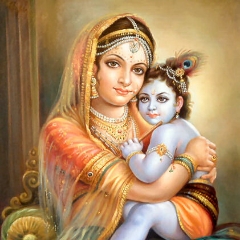Question 1 :
What possibly can be the ratio of the de Broglie wavelengths for two electrons each having zero initial energy and accelerated through 50 volts and 200 volts ?
Question 3 :
Which of the following is the energy of a possible excited state of hydrogen?
Question 4 :
The ionisation energy of a hydrogen atom in terms of Rydberg constant {tex} \left( R _ { H } \right) {/tex} is given by the expression
Question 5 :
The uncertainty in the momentum of an electron is 1.0 × 10-5 kg m s-1 . The uncertainty in its position will be:
Question 6 :
The number of d-electrons retained in {tex} \mathrm { Fe } ^ { 2 + } {/tex} (At. no of {tex} \mathrm { Fe } = 26 {/tex} ) ion is
Question 7 :
In a multi-electron atom, which of the following orbitals described by the three quantum numbers will have the same energy in the absence of magnetic and electric field ?<br>(i) n = 1, l = 0, m = 0 (ii) n =2, l = 0, m = 0 (iii) n = 2, l = 1, m = 1 (iv) n = 3, l = 2, m =1 (v) n = 3, l = 2, m = 0
Question 8 :
The total number of orbitals in a shell with principal quantum number {tex} n {/tex} is
Question 9 :
The momentum of a photon having frequency 1.0 × 10<sup>15</sup> s<sup>-1</sup> is about
Question 10 :
What is the maximum number of emission lines when the excited electron of a hydrogen atom in n = 6 drops to ground state?
Question 12 :
____ Series of lines are the only lines in hydrogen spectrum which appear in the visible region.
Question 13 :
Correct order of radius of the <img style='object-fit:contain' src='https://storage.googleapis.com/teachmint/question_assets/JEE%20Main/5e7980dcd3f9ab617fcdb1d0' height='17' width='11' >st orbit of H, He+, Li2+, Be3+ is :
Question 14 :
A stream of electrons from a heated filaments was passed two charged plates kept at a potential difference {tex}\mathrm{V \,meV}{/tex}. If e and m are charge and mass of electron,respectively,then the value of {tex} h / \lambda {/tex} (where {tex} \lambda {/tex} is wavelength associated with electron wave) is given by:<br>
Question 15 :
Which experiment is responsible for finding out the charge on an electron?
Question 16 :
If threshold wavelength (λ°) for ejection of electron from metal is 330 nm, then work function for the photoelectric emission is -
Question 17 :
The ionization enthalpy of hydrogen atom is {tex} 1.312 \times 10 ^ { 6 } \mathrm { J } {/tex} {tex} \mathrm { mol } ^ { - 1 } . {/tex} The energy required to excite the electron in the atom from {tex} \mathrm { n } = 1 {/tex} to {tex} \mathrm { n } = 2 {/tex} is
Question 18 :
The frequency of yellow light having wavelength 600 nm is -
Question 19 :
The element having no neutron in the nucleus of its atom is
Question 20 :
If 10<sup>-17</sup> J of light energy is needed by the interior of human eye to see an object. The photons of green light (λ = 550nm) needed to see the object are.
Question 21 :
An electron in excited hydrogen atom falls from fifth energy level to second energy level. In which of the following regions, the spectrum line will be observed and is part of which series of the atomic spectrum?
Question 22 :
Which of the following radiations has the highest wave number ?
Question 24 :
Which of the following represent(s) the correct set of four quantum numbers of a {tex} 4 \mathrm { d } {/tex} electron?
Question 25 :
Which of the following is the energy of a possible excited state of hydrogen?
Question 26 :
Which of the sequences given below shows the correct increasing order of energy?
Question 27 :
How many {tex} 3 \mathrm { d } {/tex} electrons can have spin quantum number {tex} - \frac { 1 } { 2 } ? {/tex}
Question 28 :
The ratio of energies of photons with wavelengths $2000A^{0}$ and $ 4000A^{0}$ is:<br/>
Question 29 :
The number of electrons having l = 0 in chlorine atom (Z = 17) is
Question 31 :
If the shortest wave length of Lyman series of H atom is x, then the wave length of the first line of Balmer series of H atom will be -
Question 33 :
An orbital described with the help of a wave function. Since many wave functions are possible for an electron, there are many atomic orbitals. When atom is placed in a magnetic field the possible number of orientations for an orbital of azimuthal quantum number 3 is
Question 34 :
In a multi-electron atom, which of the following orbitals described by the three quantum members will have the same energy in the absence of magnetic and electric fields?<br>{tex} \begin{array} { l l } { \text { (A) } n = 1 , l = 0 , m = 0 } & { \text { (B) } n = 2 , l = 0 , m = 0 } \\ { \text { (C) } n = 2 , l = 1 , m = 1 } & { \text { (D) } n = 3 , l = 2 , m = 1 } \\ { \text { (E) } n = 3 , l = 2 , m = 0 } \end{array} {/tex}<br>
Question 35 :
How many orbitals and electrons are associated with n = 4?
Question 36 :
If wavelength of photon is 2.2 × 10<sup>-11</sup> m, h = 6.6 × 10<sup>-34</sup>Js, then momentum of photon is -
Question 37 :
The de Broglie wavelength of a tennis ball of mass {tex} 60\ \mathrm { g } {/tex} moving with a velocity of {tex} 10{/tex} metres per second is approximately <br> Plank's constant, {tex}h {/tex}={tex} 6.63 \times 10^{-34} Js {/tex}
Question 38 :
Fill in the blanks with appropriate words.<br>The principal quantum number n determines the __(i)__<br>And __(ii)__ of an orbital. With the increase in value of n, the number of allowed __(iii)___ increases. Azimuthal quantum number defines the __(iv)__ of the orbital. The number of subshells in a principal shell is equal to the value __(v)__<br>(i) (ii) (iii) (iv) (v)
Question 39 :
The numbers of d-electrons retained in Fe<sup>2+</sup> (atomic number Fe = 26) ion is
Question 43 :
Which one of the following groupings represents a collection of isoelectronic species ?{tex} ( \text { At. nos.: } \mathrm { Cs } : 55 , {/tex} {tex} \mathrm { Br } : 35 ) {/tex}
Question 44 :
The ratio of the radii of first orbits of H, He<sup>+</sup> and Li<sup>2+</sup> is -
Question 45 :
The correct set of four quantum numbers for the valence electrons of rubidium atom(Z=37):
Question 46 :
Out of X -rays, infrared rays, visible rays and microwaves, the largest frequency is of
Question 47 :
Calculate the wavelength of light required to break the bond between two {tex} \mathrm { Cl } {/tex} atoms in {tex} \mathrm { Cl } _ { 2 } {/tex} molecules ({tex}\mathrm {(BE)_{cl-cl}}{/tex} = 243 kJ mole {tex}^{-1}{/tex}
Question 48 :
Which one of the following constitutes a group of the isoelectronic species?
Question 49 :
An atom of an element contains 11 electrons. Its nucleus has 13 neutrons. Find out the atomic number and approximate atomic weight.
Question 50 :
The frequency of a wave is 6 × 10<sup>15</sup> s<sup>-1</sup>. Its wave number would be
















































